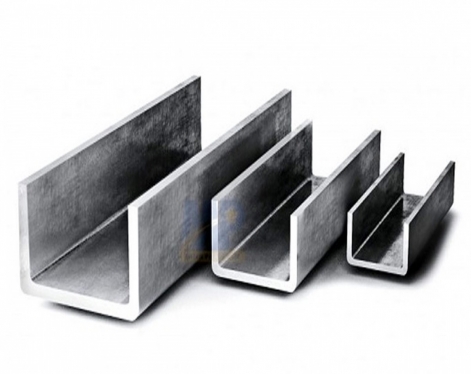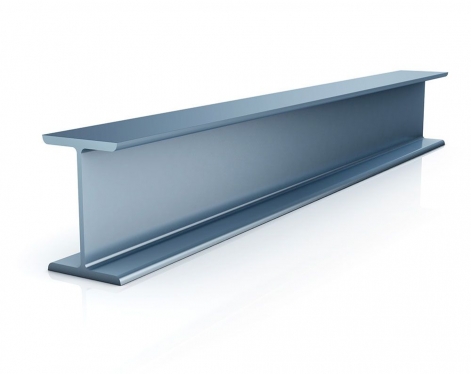In many fields such as modern construction, bridges, and machinery manufacturing, steel is an important structural material with a wide variety of applications. Among them, U-shaped steel and H-shaped steel are two common types of steel, each with its own characteristics in terms of shape, performance, and application. This article will conduct a detailed comparative analysis of u beam steel and H-shaped steel to explore their advantages and disadvantages and application scenarios.
U-shaped steel, as the name suggests, has a cross-sectional shape similar to the English letter "U", hence the name. The two sides of the U-shaped steel are parallel or slightly inclined, and the bottom is arc or straight. This structure gives metal u beam good stability and bearing capacity when under pressure. U-shaped steel is often used in mine support, tunnel support, bridge construction and other fields, and its excellent compressive resistance and stability are fully utilized in these scenarios.

H shaped metal bar has a cross-sectional shape similar to the English letter "H". The flanges on both sides of the H-shaped steel are wide and perpendicular to the web. This structure makes the H-shaped steel have high efficiency when bearing bending moment and shear force. H-shaped steel is widely used in high-rise buildings, long-span bridges, marine engineering and other fields. Its excellent mechanical properties and processing performance are favored by engineers.
(1) Mechanical properties
U-shaped steel and H-shaped steel have different mechanical properties. Due to the characteristics of its cross-sectional shape, U-shaped steel mainly bears pressure and has good compressive resistance and stability. H-shaped steel has higher bending and shear resistance and is suitable for scenes with complex stress. Therefore, when selecting steel, it is necessary to decide which type of steel to use based on the actual stress conditions.
(2) Application scenarios
Due to the different mechanical properties of u shape steel beam and H-shaped steel, their application scenarios are also different. U-shaped steel is mainly used in scenes such as mine support and tunnel support that need to withstand greater pressure. H section steel is widely used in scenes such as high-rise buildings and long-span bridges that need to withstand bending moments and shear forces. In addition, metal h beam can also be used to make steel structural components, such as steel beams and steel columns, to meet the needs of building structures.
(3) Processing performance
In terms of processing performance, U-shaped steel and H-shaped steel are also different. U-shaped steel has a relatively simple cross-sectional shape and is easy to process. It can be processed by welding, cutting, etc. The cross-sectional shape of H-shaped steel is relatively complex. When processing, it is necessary to consider the connection between the flange and the web, so the processing difficulty is relatively high. However, with the development of modern processing technology, the processing problem of H-shaped steel has been well solved.
② Good stability: The bottom arc or straight structure of U-shaped steel is conducive to improving its stability and reducing the risk of deformation and instability.
③ Low processing difficulty: The cross-sectional shape of U-shaped steel is relatively simple, and the processing difficulty is low, which can reduce production costs.
① Poor bending performance: Compared with H-shaped steel, U-shaped steel has poor bending performance and is not suitable for scenes with large bending moments.
② Limited application scenarios: Since U-shaped steel mainly bears pressure, its application scenarios are relatively limited, and it is mainly used in mine support, tunnel support and other fields.
① Excellent mechanical properties: H-shaped steel has high bending and shear resistance, and is suitable for scenes with complex stress.
② Wide application scenarios: H-shaped steel is widely used in high-rise buildings, large-span bridges, marine engineering and other fields, and has broad application prospects.
③ Can make large components: H-shaped steel can be used to make steel structure components, such as steel beams, steel columns, etc., to meet the needs of large building structures.
(1) High processing difficulty: Since the cross-sectional shape of H-shaped steel is relatively complex, the connection problem between the flange and the web needs to be considered during processing, and the processing difficulty is relatively high.
(2) High cost: Compared with U-shaped steel, the production cost of H-shaped steel is higher, which may limit its application to a certain extent.
Through the comparative analysis of U-shaped steel and H-shaped steel, we can see that the two have their own characteristics in terms of mechanical properties, application scenarios and processing performance. When choosing which type of steel to use, it is necessary to comprehensively consider factors such as actual stress conditions, application scenarios, and production process. With the continuous advancement of science and technology and the emergence of new materials, more steels with superior performance and low cost may be available in the future, providing strong support for the development of construction, bridges, machinery manufacturing and other fields.
Related Reading:H beam vs I beam
1.Overview of U beam
U-shaped steel, as the name suggests, has a cross-sectional shape similar to the English letter "U", hence the name. The two sides of the U-shaped steel are parallel or slightly inclined, and the bottom is arc or straight. This structure gives metal u beam good stability and bearing capacity when under pressure. U-shaped steel is often used in mine support, tunnel support, bridge construction and other fields, and its excellent compressive resistance and stability are fully utilized in these scenarios.
2. Overview of h shape beam
H shaped metal bar has a cross-sectional shape similar to the English letter "H". The flanges on both sides of the H-shaped steel are wide and perpendicular to the web. This structure makes the H-shaped steel have high efficiency when bearing bending moment and shear force. H-shaped steel is widely used in high-rise buildings, long-span bridges, marine engineering and other fields. Its excellent mechanical properties and processing performance are favored by engineers.

3. Comparison between u shape beam and H beam
(1) Mechanical propertiesU-shaped steel and H-shaped steel have different mechanical properties. Due to the characteristics of its cross-sectional shape, U-shaped steel mainly bears pressure and has good compressive resistance and stability. H-shaped steel has higher bending and shear resistance and is suitable for scenes with complex stress. Therefore, when selecting steel, it is necessary to decide which type of steel to use based on the actual stress conditions.
(2) Application scenarios
Due to the different mechanical properties of u shape steel beam and H-shaped steel, their application scenarios are also different. U-shaped steel is mainly used in scenes such as mine support and tunnel support that need to withstand greater pressure. H section steel is widely used in scenes such as high-rise buildings and long-span bridges that need to withstand bending moments and shear forces. In addition, metal h beam can also be used to make steel structural components, such as steel beams and steel columns, to meet the needs of building structures.
(3) Processing performance
In terms of processing performance, U-shaped steel and H-shaped steel are also different. U-shaped steel has a relatively simple cross-sectional shape and is easy to process. It can be processed by welding, cutting, etc. The cross-sectional shape of H-shaped steel is relatively complex. When processing, it is necessary to consider the connection between the flange and the web, so the processing difficulty is relatively high. However, with the development of modern processing technology, the processing problem of H-shaped steel has been well solved.
4. Analysis of the advantages and disadvantages of U-shaped steel and H-shaped steel
(1) Advantages of U-shaped steel
① Good compressive performance: The cross-sectional shape of U-shaped steel gives it good compressive performance and is suitable for scenes with high pressure.② Good stability: The bottom arc or straight structure of U-shaped steel is conducive to improving its stability and reducing the risk of deformation and instability.
③ Low processing difficulty: The cross-sectional shape of U-shaped steel is relatively simple, and the processing difficulty is low, which can reduce production costs.
(2) Disadvantages of U-shaped steel
① Poor bending performance: Compared with H-shaped steel, U-shaped steel has poor bending performance and is not suitable for scenes with large bending moments.② Limited application scenarios: Since U-shaped steel mainly bears pressure, its application scenarios are relatively limited, and it is mainly used in mine support, tunnel support and other fields.
(3) Advantages of H-shaped steel
① Excellent mechanical properties: H-shaped steel has high bending and shear resistance, and is suitable for scenes with complex stress.② Wide application scenarios: H-shaped steel is widely used in high-rise buildings, large-span bridges, marine engineering and other fields, and has broad application prospects.
③ Can make large components: H-shaped steel can be used to make steel structure components, such as steel beams, steel columns, etc., to meet the needs of large building structures.
4. Disadvantages of H-shaped steel
(1) High processing difficulty: Since the cross-sectional shape of H-shaped steel is relatively complex, the connection problem between the flange and the web needs to be considered during processing, and the processing difficulty is relatively high.(2) High cost: Compared with U-shaped steel, the production cost of H-shaped steel is higher, which may limit its application to a certain extent.
5. Conclusion and Prospect
Through the comparative analysis of U-shaped steel and H-shaped steel, we can see that the two have their own characteristics in terms of mechanical properties, application scenarios and processing performance. When choosing which type of steel to use, it is necessary to comprehensively consider factors such as actual stress conditions, application scenarios, and production process. With the continuous advancement of science and technology and the emergence of new materials, more steels with superior performance and low cost may be available in the future, providing strong support for the development of construction, bridges, machinery manufacturing and other fields.Related Reading:H beam vs I beam









